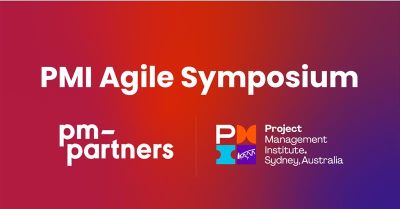What is project planning (and what your project plan should entail)?

Project planning is one of the foundational skills of project management and a key indicator of project success. Make sure you have these project planning fundamentals covered.
What is project planning?
Project planning is a critical phase in project management. It’s the second of five distinct phases of the project management life cycle, as outlined by PMI’s PMBOK® Guide.
Where the first phase – project initiation – is about designing the project to meet stakeholder needs, the project planning phase specifies tasks, timelines and actions to address more granular requirements, laying out exactly what is needed for a successful project outcome. Among other areas, this phase involves considering project goals and objectives, defining project scope, breaking down the project into smaller and more manageable tasks, and developing a more specific timeline and deadlines.
Essentially, a project plan is a detailed framework that includes how the project will be executed given its stakeholders, goals and objectives, and specifies the deliverables according to scope, schedule, resources and budget. It is controlled by risk management, quality metrics and change management. Once project planning is completed, the team should have a clear direction where everyone understands their roles and responsibilities. From here, efficient coordination among various stakeholders and across tactics can take place.
No matter what industry or type of initiative you are undertaking, a great project plan involves these elements:
- Goals and project objectives
- Success metrics
- Stakeholders and roles
- Scope and budget
- Milestones, deliverables, and project dependencies
- Timeline and schedule
- Communication plan.
Why good project planning is critical
In a recent PMI Pulse of the Profession® Report, respondents were asked to identify the primary causes of project failures in their organisations. Of the top five answers, the following three all relate to inadequate project planning:
- poor requirements gathering (affecting 40% of failed projects)
- poor upfront planning (33%)
- inadequate vision and goals (28%).
This indicates that planning is a crucial part of project success.
Planning enables the team to clearly see what the true essence of the project is and how to defend against challenges to project success. For example, an issue such as scope creep, where requirements expand beyond the initial bounds of the project risking delays and budget overruns, can be prevented with a clearly defined scope. This makes the project plan an essential reference document that sets out a comprehensive roadmap for stakeholders to follow.
Project planning fundamentals
Project planning is one part of the overall project management cycle. It’s a critical step that sets the stage for proper planning and execution of important deliverables. Let’s take a look at project planning fundamentals in the context of the entire project management process.
What are the five stages of the project management life cycle?
According to the Project Management Institute, a project management life cycle consists of 5 distinct phases including initiation, planning, execution, monitoring, and closure that combine to turn a project idea into a working product. Here is a bit of detail about each of the stages.
Initiation – This stage involves defining the project at a high level. Key activities include identifying the project’s objectives, scope, and stakeholders. A feasibility study may be conducted to assess whether the project is viable and aligns with organisational goals. The outcome is typically a project charter that formally authorises the project and outlines its purpose.
Planning – In the planning stage, detailed planning takes place to outline how the project will be executed. This includes developing a comprehensive project plan that defines the scope, deliverables, timeline, budget, resource allocation, and risk management strategies. The work breakdown structure (WBS) is created to break the project into manageable tasks, and a communication plan is established to keep stakeholders informed.
Execution – During the execution phase, the project plan is put into action. Team members perform their assigned tasks, and resources are utilised according to the project plan. Effective communication and collaboration among team members and stakeholders are crucial in this phase. Project managers coordinate efforts, manage resources, and ensure that the project stays on track.
Monitoring – Monitoring occurs concurrently with execution and involves tracking the project’s progress against the plan. Key performance indicators (KPIs) are used to measure performance, and regular status updates are provided to stakeholders. Any deviations from the plan are identified, and corrective actions are taken to address issues, ensuring that the project remains aligned with its objectives.
Closure – The closure stage marks the completion of the project. It involves finalising all activities, delivering the completed project to stakeholders, and obtaining formal acceptance. A post-project evaluation is conducted to assess what went well and what could be improved for future projects. Documentation is finalised, lessons learned are recorded, and project resources are released. This stage ensures that the project is officially closed and all contractual obligations are met.
What are the 7 elements of a project plan?
A project plan is a set of documentation that defines the execution and controls the stages of a project. Traditionally, there are seven elements involved, including:
- Scope management – Scope management defines the boundaries of the project, outlining what is included and excluded. It involves creating a scope statement, managing scope changes, and ensuring that project deliverables meet stakeholder expectations.
- Quality management – Quality management focuses on ensuring that project deliverables meet predefined quality standards. It includes defining quality criteria, implementing quality assurance processes, and conducting quality control checks throughout the project lifecycle.
- Risk assessment – Risk assessment involves identifying, analysing, and prioritising potential risks that could impact the project. It includes developing risk mitigation strategies and continuously monitoring risks throughout the project to minimise their effects.
- Resource management – Resource management entails planning and allocating the necessary resources, including personnel, equipment, and budget, to ensure successful project execution. It involves optimising resource utilisation and addressing any resource-related issues.
- Stakeholder management – Stakeholder management involves identifying all project stakeholders, understanding their needs and expectations, and maintaining effective communication throughout the project. It aims to engage stakeholders and ensure their support and satisfaction.
- Schedule management – Schedule management focuses on creating and maintaining a project timeline. It includes defining project milestones, estimating task durations, sequencing activities, and monitoring progress to ensure timely completion of the project.
- Change management – Change management addresses how changes to the project scope, schedule, or resources will be handled. It includes establishing a formal process for evaluating, approving, and implementing changes while minimising disruptions to the project.
The project planning process
The purpose of a project plan is to define fundamental elements of the project so that stakeholders understand how the project goals will be met. The planning phase allows the project team to explore options, test ideas, and finalise the business case, ultimately building a solid foundation for success.
Here are the key questions the project team should answer in this phase:
1. What are the goals of this project?
The goals and objectives of the project should align with the strategic objectives of the organisation. The broader goals should be outlined in the charter during the initiation phase and typically stem from a problem statement summarising the issue you are looking to solve; in the planning phase you’re looking to develop SMART goals. This means each goal should be:
- Specific
- Measurable
- Achievable
- Relevant
- Time-bound.
2. Who are the project stakeholders?
Stakeholders should include:
- project team members
- the project sponsor, and
- other people who will be directly or indirectly involved in or affected by the project.
The main stakeholders would have been considered and/or consulted during the initiation phase; the planning phase is your chance to profile them by capturing key details including their expectations and requirements to ensure you meet their needs as the project progresses. Have a plan for how you will communicate with them also, including what information they need, the best channel and format and how frequently.
3. What is the project scope?
Scope is about the breadth of the project and defining the areas that your project will cover – as well as what it will not. If you are building a bridge, for example, your scope may include traffic management and tolls but not the arterial road leading onto it. Your project plan should include detailed scope and deliverables, including a work breakdown structure (WBS) that divides the scope into smaller more manageable tasks that contribute to the deliverables.
4. What resources will I need?
Consider all forms of resources including staff and expertise, facilities, equipment, and materials, as well as the need for their availability throughout the project – for instance, do you need an architect on hand for the duration of the project or just the first few weeks? Also pay attention to interdependencies; if your construction crew is ready but your materials haven’t been delivered, then that represents a waste of resources.
5. What is the schedule?
Having identified activities and your required resources, develop a detailed project schedule taking into account each task or activity, their expected duration and any dependencies as mentioned above. Also include any milestones to be met. It is normal to consider contingencies in your project schedule as part of your risk management.
6. What is the budget?
Once you have defined the scope alongside the resources needed and the expected schedule it will become easier to estimate the project’s cost and therefore develop a detailed budget. The project’s duration may also play a role in the final budget; given influences such as inflation and price movement on labour and materials, the longer the project, the less certain the costs into the future. Experienced project managers build contingency into the budget taking these factors into account.
7. What are the risks?
Risks are uncertainties that affect the project. They can either be:
- positive (opportunities), or
- negative (threats).
A thorough risk plan identifies and analyses potential events and prioritises them according to their impact on the project. It should include actions to take advantage of opportunities or mitigate threats.
8. How do we manage change?
Plans change and the ability to anticipate change and build contingency into a plan makes the planning phase more valuable. Your project plan should include a change control plan that details how to manage change requests and approvals, and how to log them. This ensures that no part of the project changes without being evaluated as necessary.
9. How do we ensure quality?
By its simplest definition, quality is when the stakeholders are satisfied with the project deliverables. Your plan should establish quality criteria for project deliverables, which may include factors such as time and cost outlay. Another consideration is identifying the key performance indicators (KPIs) that contribute to quality.
10. How do we track benefits?
Finally, your project plan should detail the expected benefits of the project based on outputs and outcomes and account for risk and opportunity management. Review the validity of these expected benefits and document how they will be tracked and realised.
Project planning software
Fortunately, you don’t have to go through project planning alone. There are several proven tools that can help you to build out an effective project plan. Our favourites are:
ClickUp – Called the “everything work” app, this is a great project management tool for teams who rely on the agile methodology.
monday.com – This option is good for startups or other firms on a smaller budget. There are several tools available including custom workflows.
Asana – Offering powerful collaboration tools, Asana helps teams to streamline workflows and manage resources effectively. It’s especially helpful for remote teams to stay on the same page.
Zoho Projects – The intuitive, visual tools are helpful for enhancing productivity and offer flexible task management and collaborative workspaces. There are also a lot of integrations that project managers can take advantage of.
Project planning steps
Here are the key steps involved in developing an actual project plan that can move your initiative forward.
- Define project objectives – Clearly articulate the goals and objectives of the project. This step ensures that all stakeholders have a common understanding of what the project aims to achieve and the desired outcomes.
- Identify project scope – Establish the boundaries of the project by defining what is included and excluded. Create a scope statement that outlines the deliverables, features, and functionalities, as well as any constraints or assumptions.
- Develop a Work Breakdown Structure (WBS) – Break down the project into smaller, manageable tasks and deliverables using a Work Breakdown Structure. This hierarchical decomposition helps in organising the project and provides a clear framework for task assignment.
- Estimate resources and budget – Identify the resources required for each task, including personnel, equipment, and materials. Estimate the costs associated with these resources to develop a project budget that outlines expected expenses.
- Create a project schedule – Develop a timeline for the project by estimating the duration of each task, determining dependencies, and sequencing activities. Use tools like Gantt charts or network diagrams to visualise the project timeline.
- Identify risks and develop mitigation strategies – Conduct a risk assessment to identify potential risks that may impact the project. Analyse the likelihood and impact of each risk, and develop strategies to mitigate or manage these risks effectively.
- Establish quality criteria – Define the quality standards and metrics that will be used to evaluate project deliverables. This step includes outlining quality assurance and quality control processes to ensure that the project meets its quality objectives.
- Develop communication plan – Create a communication plan that outlines how information will be shared among stakeholders and team members. This includes defining communication channels, frequency of updates, and formats for reporting project status.
- Define stakeholder roles and responsibilities – Identify all stakeholders involved in the project and clarify their roles and responsibilities. This ensures accountability and helps in managing expectations throughout the project lifecycle.
- Finalise and approve the project plan – Compile all elements of the project plan into a cohesive document and present it to stakeholders for approval. Ensure that all stakeholders are aligned and committed to the project plan before proceeding to execution.
These steps provide a structured approach to developing a comprehensive project plan, ensuring that all critical aspects are considered and documented for successful project execution.
How to build a project plan
When you build your project plan, you should account for how the project will be executed, monitored, and completed. Some of the things that you need to do in order to successfully complete the steps above include:
- Define project objectives – Start by clearly documenting the project goals and objectives. Identify what the project aims to achieve and what success looks like.
- Identify key stakeholders – Determine who will be involved or impacted by the project, including team members, clients, and other parties. Make sure you understand their needs and expectations.
- Document project scope – Here you will specify what is included in the project. You’ll need to create detailed scope statements describing deliverables and key features.
- Estimate resources, budget, and work breakdowns – Identify the resources needed for each task, including personnel, tools, and materials. Here you will also estimate costs and create a comprehensive budget.
- Create a project schedule – Develop a timeline for the project by estimating the duration of tasks, understanding dependencies, and sequencing activities.
Project planning template
This is another area where it makes sense to take advantage of some work that’s already been done. There are plenty of templates available that can be used for developing a project plan; choose one that aligns with your work style, goals, and needs. We like this template, and you can find several other examples that might work for you in this Forbes repository.
An essential skill and how to develop it
Former US President Dwight Eisenhower once said: “Plans are worthless, but planning is everything.” Though plans rarely proceed exactly as prescribed, the act of planning is a critical skill that increases the chances of project success. Not only does effective planning help to prevent known issues and address potential challenges with contingencies, but it gives the project team the flexibility, resilience and confidence to make decisions for the benefit of the project throughout its execution.
In this regard, developing your understanding of project planning and the inter-related phases of every project’s life cycle is vital. Hands-on experience plays a big part but so too does relevant, quality training. PM-Partner’s Project Management Fundamentals course, for example, provides you with the essential skills to both manage a project end-to-end, and/or be an effective and valuable member of the project team.
Aligned with the PMBOK® Guide, the course uses a real-life case study approach to follow a project from conception through to completion and final review. The focus is on immediate and direct knowledge transfer to the workplace, with learning outcomes including the ability to:
- Assimilate essential tools and disciplines for planning and controlling projects
- Scope a project effectively
- Create a work breakdown structure and translate this into a reliable schedule
- Estimate with a high degree of accuracy using proven techniques
- Assess and manage project risks.
On completion of the course, participants will walk away with proven techniques, tools and processes to deliver projects within specification, on time and on budget – skills they can draw on to improve project outcomes, while also boosting their chances of career success.
Looking to bolster your foundational project skills? Check out our Project Management Fundamentals course, or get in touch online or via 1300 70 13 14 to find out more about what we can do to help you improve project performance.
PMI and PMBOK are registered marks of the Project Management Institute, Inc.







